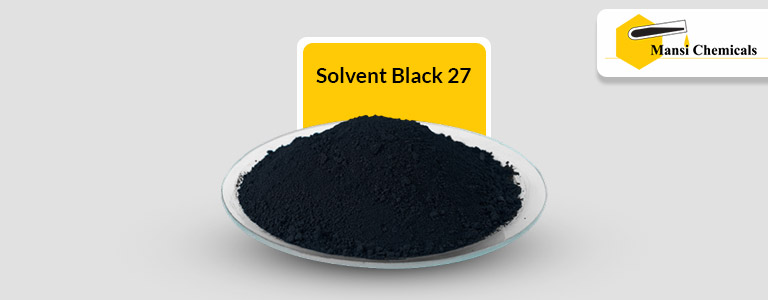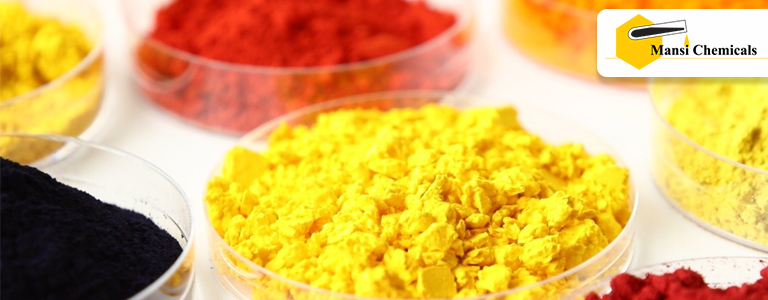Solvent Black 27 is a synthetic dye that is commonly used in various industries, including ink, paints & coatings, leather and stone industry. This dye is known for its intense black colour and excellent solubility in various solvents.
In this article, we will explore the chemical properties of Solvent Black 27, its various applications, the manufacturing process, safety and regulations, environmental impact, and future prospects for its use. By the end of this article, you will have a comprehensive understanding of Solvent Black 27 and its importance in various industries.
Molecular structure
Solvent Black 27 is an azo metal complex dye and its molecular formula is C17H13N3O4Cr1/2. It has a complex and aromatic molecular structure.
Physical Properties
Solvent Black 27 is a black powder with almost no odour. Its physical properties include:
- Density: 1.33 g/cm3
- Bulk Volume: 3.5 ltr/kg
- Appearance: Black powder
- pH: 6
Under typical usage and storage conditions, Solvent Black 27 is unaffected by frost and under dry conditions can be stored almost indefinitely. However, like most organic compounds, they are combustible, a point of particular significance during storage. It should also be noted that dyes in drums that have been opened and not resealed may absorb considerable amounts of moisture, depending on the humidity.
Solubility and compatibility with other chemicals
Solvent Black 27 is highly soluble in a range of organic solvents. It shows good solubility in lower alcohols, glycol ethers, ketones, and esters, but are virtually insoluble in aliphatic and aromatic hydrocarbons.
Applications of Solvent Black 27
Solvent Black 27 has various applications in different industries, including:
- Ink Industry: Solvent Black 27 is used as a colorant in ink and toner formulations. It imparts a deep black color to the ink or toner, which is essential for printing high-quality documents.
- Coatings Industry: Solvent Black 27 is used as a colourant in the production of coatings, such as automotive paints, industrial coatings, and wood stains. It provides a high degree of colour intensity and good lightfastness.
- Stone Industry: Solvent Black 27 is used to manufacture stone converters to enhance and darken the color of a stone, and phase out the color variations of a stone.
- Leather: Solvent Black 27 is used as a dye for coloring leather products such as shoes, belts, and bags. It provides a consistent and uniform black color to the leather.
- Other industries: Solvent Black 27 is also used in the production of printing inks, marker pens.
Solvent Black 27 is a versatile dye that provides a deep black colour with good solubility and compatibility with various solvents and chemicals.
The manufacturing process of Solvent Black 27
- An aromatic amine, in the presence of mineral acid (HCL) & Sodium nitrite at 0-50° C goes under diazotization which complex with coupler in alkaline medium (pH:8.5 to 11.0) at 3-7° C & form mono azo
- Mono azo compound at 95 -1000 C goes under metallization in the presence of chromium or form metal complex dyestuffs.
- The complex is treated with Amine solution to improve solubility, Filtration rate
- The mass is isolated by Acidification & filtered through a filter press. It is also washed with required quantity of water & air.
- The wet cake is unloaded and put into the dryer which is followed by pulverization. Blending is added if required.
The manufacturing process of Solvent Black 27 is complex and requires careful control of reaction conditions and purification steps to ensure the production of high-quality dye with consistent properties. The final product is a black powder that can be used in various applications in the ink, paint and coatings industries.
Disposal methods and waste management
Disposal methods and waste management of Solvent Black 27 are important considerations to ensure the safety of human health and the environment.
Here are some guidelines for the disposal of Solvent Black 27:
- Sewage disposal-relevant information – Do not empty into drains. Avoid release to the environment. Refer to special instructions/safety data sheets.
- Waste treatment of containers/packaging – Completely emptied packages can be recycled. Handle contaminated packages in the same way as the substance itself.
It is important to follow local regulations and guidelines for the disposal of Solvent Black 27. Improper disposal can result in environmental pollution and harm human health.
Why Choose Mansi Chemicals for Solvent Dyes
If you are looking for a reliable and trustworthy solvent dyes manufacturer, Mansi Chemicals is a great choice. With over 30 years of experience in the industry, they have established themselves as a leading manufacturer and exporter of solvent-soluble dyes in the world.
They are committed to providing exceptional quality and service, and their mission and vision reflect their dedication to sustainable growth and total customer confidence. Mansi Chemicals is an excellent option for anyone seeking high-quality solvent dyes, speedy delivery, and consistency in their products. Get in touch with solvent dye experts today.

